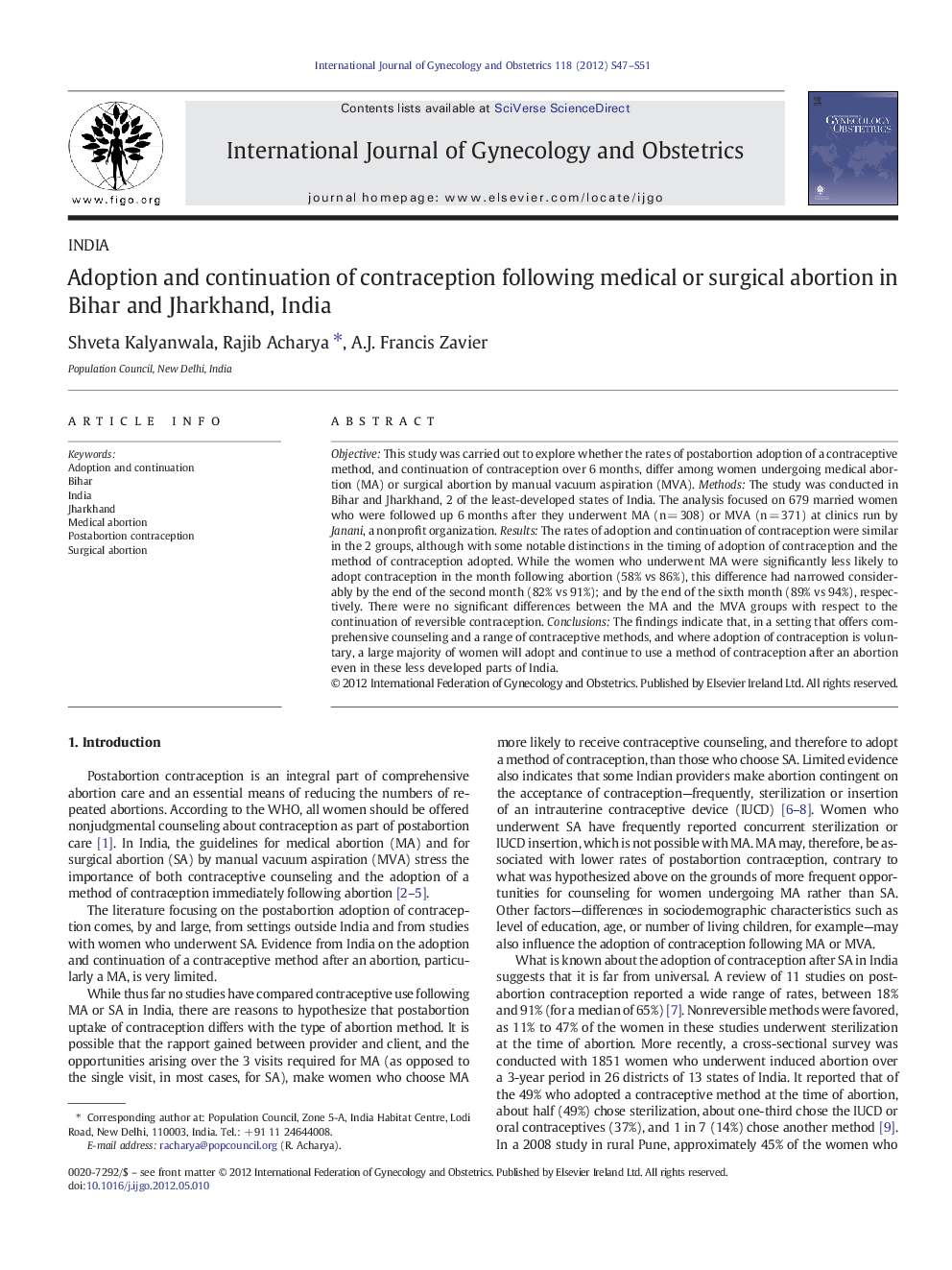| Article ID | Journal | Published Year | Pages | File Type |
|---|---|---|---|---|
| 3949061 | International Journal of Gynecology & Obstetrics | 2012 | 5 Pages |
ObjectiveThis study was carried out to explore whether the rates of postabortion adoption of a contraceptive method, and continuation of contraception over 6 months, differ among women undergoing medical abortion (MA) or surgical abortion by manual vacuum aspiration (MVA).MethodsThe study was conducted in Bihar and Jharkhand, 2 of the least-developed states of India. The analysis focused on 679 married women who were followed up 6 months after they underwent MA (n = 308) or MVA (n = 371) at clinics run by Janani, a nonprofit organization.ResultsThe rates of adoption and continuation of contraception were similar in the 2 groups, although with some notable distinctions in the timing of adoption of contraception and the method of contraception adopted. While the women who underwent MA were significantly less likely to adopt contraception in the month following abortion (58% vs 86%), this difference had narrowed considerably by the end of the second month (82% vs 91%); and by the end of the sixth month (89% vs 94%), respectively. There were no significant differences between the MA and the MVA groups with respect to the continuation of reversible contraception.ConclusionsThe findings indicate that, in a setting that offers comprehensive counseling and a range of contraceptive methods, and where adoption of contraception is voluntary, a large majority of women will adopt and continue to use a method of contraception after an abortion even in these less developed parts of India.
